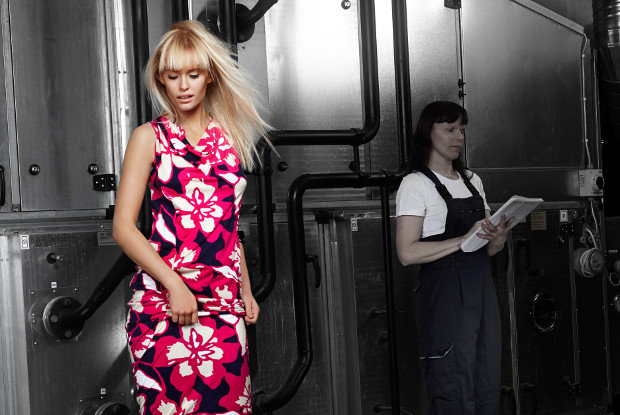Dissolving pulp, fabric

Case - Published 4.6.2014
Did you know that your clothes are made from wood-based raw materials? You have probably seen viscose mentioned on washing labels. Viscose is a cloth fibre made from wood. Rayon and modal are also textiles made from wood fibres.
Dissolving pulp, which is the raw material of viscose, rayon and modal, can be manufactured from all tree species. Birch is used at Stora Enso Enocell mill in Finland. In other countries, dissolving pulp is also made from other tree species such as eucalyptus.
The manufacturing process of dissolving pulp starts in the same way as the manufacturing of pulp for paper i.e. with the chipping of debarked wood. Ligning, extractives and hemicelluloses, which are sugars present in wood, are removed from the pulp . The wood is cooked in chemicals, washed, bleached and dried. The end product is a high purity pulp, which has the same chemical properties as, say, cotton.
Dissolving pulp destined for the textile industry is then put through a complex process, where the pulp is regenerated with help of sodium hydroxide and carbon disulphide . After this the cellulose derivative is pushed through a nozzle into a mild sulphuric acid solution. Cellulose forms strands which are then neutralised, washed, bleached and dried. This gives a cotton wool-like fluff, which is then turned into yarn.
In the raw materials market of the textile industry, the main competitors of wood based dissolving pulp are cotton and oil-based fibers like polyester. Compared with other fiber types wood fibers are renewable and sustainable. Cotton crops need very large quantities of water: with a water amount needed to produce 1 kg of cotton fibers you can produce over 26 kg of viscose.
Cotton is grown on fields which are also needed for food crops. The total area of arable land is continuously declining, whereas food demand continues to increase at a dizzying rate. The following example is a good illustration of the possibilities of dissolving pulp: in Finland, annual forest growth exceeds the consumption rate by 15 million cubic metres. If this timber surplus would be used to replace cotton in form of dissolving pulp , it would free up enough cotton fields to grow food crops for 15 million people.
Text and photos are from the info cards in the presentation briefcase on the Finnish forest sector. The idea of a briefcase with various kinds of samples to present this diverse sector came from the young people themselves. The briefcase has been handed out at visits to upper secondary schools.
More information on the briefcase and visits: vilma.issakainen(@)smy.fi and anne.kettunen(@)forestindustries.fi.
